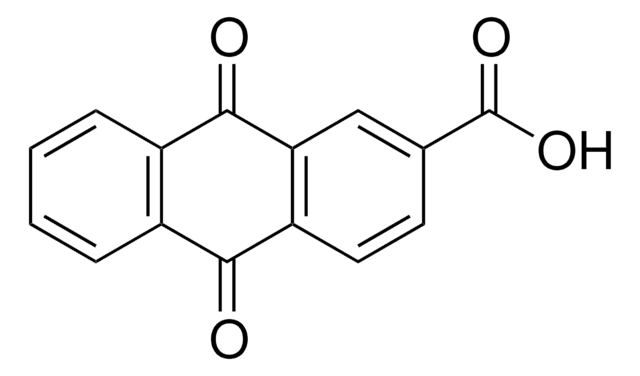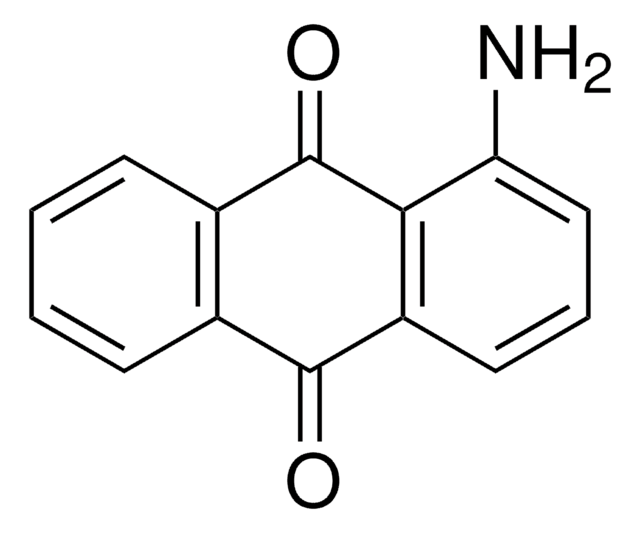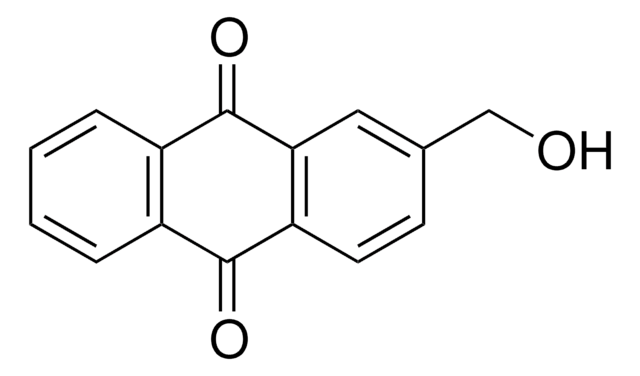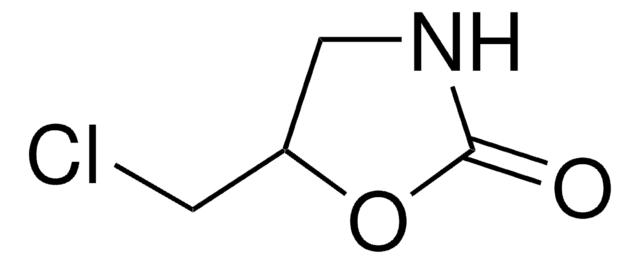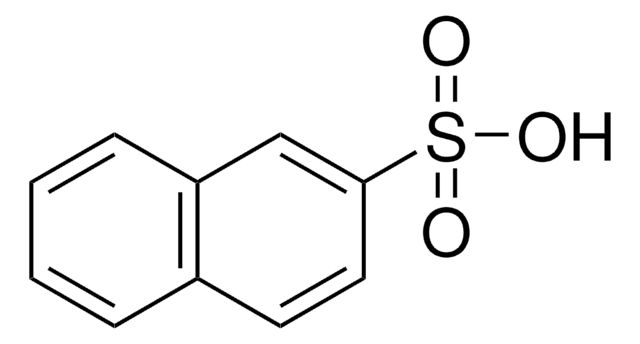All Photos(2)
About This Item
Empirical Formula (Hill Notation):
C15H9ClO2
CAS Number:
Molecular Weight:
256.68
Beilstein:
1975355
MDL number:
UNSPSC Code:
12352100
PubChem Substance ID:
NACRES:
NA.22
Recommended Products
Assay
98%
form
solid
mp
166-169 °C (lit.)
functional group
chloro
ketone
SMILES string
ClCc1ccc2C(=O)c3ccccc3C(=O)c2c1
InChI
1S/C15H9ClO2/c16-8-9-5-6-12-13(7-9)15(18)11-4-2-1-3-10(11)14(12)17/h1-7H,8H2
InChI key
NVUYDKYMEMGYFP-UHFFFAOYSA-N
Looking for similar products? Visit Product Comparison Guide
General description
2-(Chloromethyl)anthraquinone is an anthraquinone derivative. It was utilized as a substrate to synthesize Cibanone yellow R, a vat dye. Its electrochemical behavior has been studied over a wide pH range.
Application
2-(Chloromethyl)anthraquinone may be used in the following processes:
- Synthesis of 2-[methylamino-N-(1′-methyl-4′-N,N-diethylaminobutyl)]anthraquinone diphosphate.
- Synthesis of 2-(3,4-dicyano-phenyl)-2-(9,10-dioxo-9,10-dihydroantracen-2-yl-methyl)-malonic acid diethyl ester, starting reagent for the synthesis of tetra substituted metallophthalocyanines.
- To alter the glassy carbon (GC) electrode surface in order to investigate the oxygen reduction reaction (ORR) in alkaline medium.
Signal Word
Danger
Hazard Statements
Precautionary Statements
Hazard Classifications
Skin Corr. 1B
Storage Class Code
8A - Combustible corrosive hazardous materials
WGK
WGK 3
Flash Point(F)
Not applicable
Flash Point(C)
Not applicable
Personal Protective Equipment
dust mask type N95 (US), Eyeshields, Gloves
Choose from one of the most recent versions:
Already Own This Product?
Find documentation for the products that you have recently purchased in the Document Library.
Electrocatalysis of oxygen reduction on glassy carbon electrodes modified with anthraquinone moieties.
Mooste M, et al.
Journal of Solid State Electrochemistry, 18(6), 1725-1733 (2014)
Synthesis, electrochemistry, spectroelectrochemistry and electrocolorimetry of phthalocyanine-anthraquinone hybrids.
Sezer B, et al.
Synt. Metals, 160(19), 2155-2166 (2010)
Sulphur dyes and sulphurised vat dyes.
Shah KH, et al.
Proceedings of the Indian Academy of Sciences - Section A, 30(1) (1949)
Electrochemical investigations of unexplored anthraquinones and their DNA binding.
Shah A, et al.
Journal of Electrochemical Science and Engineering, 3(1), 19-27 (2013)
Kevin K Schrader et al.
Applied and environmental microbiology, 69(9), 5319-5327 (2003-09-06)
Musty "off-flavor" in pond-cultured channel catfish (Ictalurus punctatus) costs the catfish production industry in the United States at least 30 million US dollars annually. The cyanobacterium Oscillatoria perornata (Skuja) is credited with being the major cause of musty off-flavor in
Our team of scientists has experience in all areas of research including Life Science, Material Science, Chemical Synthesis, Chromatography, Analytical and many others.
Contact Technical Service

